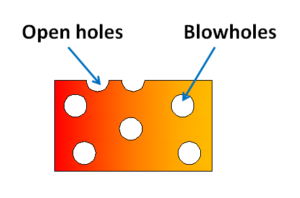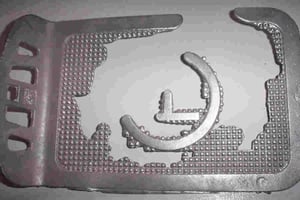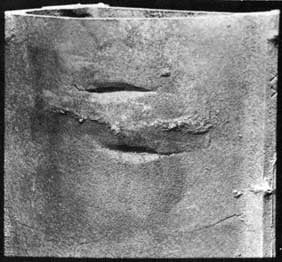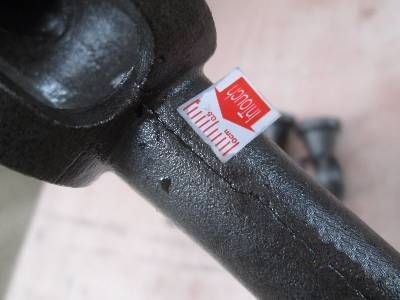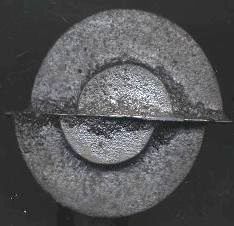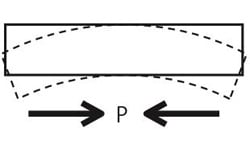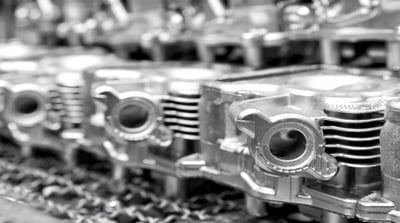 Your cast iron metal pan leaves the factory with pinholes, leading to a slew of complaints from your customers. What happened? How could you have prevented this from happening?
Your cast iron metal pan leaves the factory with pinholes, leading to a slew of complaints from your customers. What happened? How could you have prevented this from happening?
Foundry production is a complex multi-step process. The technical level of each process varies greatly. Skills of the operator, quality management and equipment can all affect the final quality of the casting.
The key to preventing product defects in your casted products is to set clear expectations and tolerances for quality issues with your supplier (related: How Experienced Importers Limit Product Defects in 3 Stages [eBook]).
But before you can do that, you need to have a clear understanding of the different types of casting defects and their causes. Only then can you prevent casting defects and avoid sending defective products to your customers.
WHAT ARE CASTING DEFECTS?
Metal casting is a manufacturing process in which molten metal is poured into a mold and allowed to solidify into a desired shape or component. Casting defects can occur for a wide variety of reasons such as pouring conditions, environmental conditions, alloy composition, and much more.
When a casting defect is present, it can hurt the integrity or functionality of the product. Some casting defects can be tolerated but most will need to be removed or prevented.
Read on or click the links below to jump to the section for each of these types of casting defects.
Gas porosity casting defects and causes
Gas porosity occurs when the metal traps gas (most often nitrogen, oxygen or hydrogen) during casting.
When the casting cools and solidifies, bubbles form because the solid form of the metal cannot hold as much gas as the liquid form. These bubbles appear on a casting as rounded, circular cavities or holes.
There are three types of casting defects related to gas porosity:
1. Pinholes
Pinholes, also sometimes referred to as porosities, are very tiny holes (about 2 mm) usually found in the cope (upper) part of the mold, in poorly vented pockets.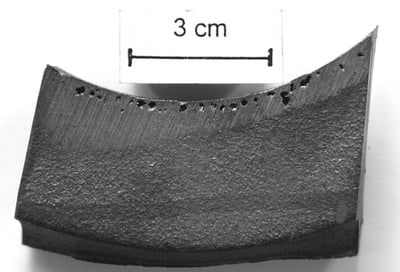
They usually appear in large numbers together, either at the surface or just below the surface of the casting. They are always visible to the naked eye and don’t require equipment to identify.
2. Subsurface blowhole
Blowholes, or simply blows, are larger cavities than pinholes.
A subsurface blowhole appears on the inside of a cast and usually isn’t visible until after machining.
Subsurface blowholes can be difficult to detect before machining, requiring harmonic, ultrasonic, magnetic or x-ray analysis.
3. Open holes
These blowholes appear on the surface of the cast and are easier to detect than subsurface blowholes.
Causes and prevention of gas porosity
There are several causes of cavity defects.
- Poor venting of mold and cores
- Insufficient drying of mold and cores
How can you prevent gas porosity?
Scars are shallow blows that appear on a flat surface, while blisters are scars covered with a thin layer of metal.
Potential solutions include:
- Incorporate good fluxing and melting practices: melt metal in a vacuum, in an environment of low-solubility gases or under a flux that prevents contact with the air
- Increase gas permeability of sand: coarser sands have a higher permeability
- Increase permeability of mold and cores. Allow air and gas to escape from the mold cavity
- Dry out molds and cores before use and store dry
- Increase rate of solidification by reducing metal temperature during casting
Shrinkage casting defects and causes
Shrinkage occurs because metals are less dense as a liquid than a solid.
A shrinkage cavity is a depression in a casting which occurs during the solidification process. Shrinkage porosity appears with angular edges, compared to the round surfaces of gas porosity. Cavities might also be paired with dendritic fractures or cracks.
Large shrinkage cavities can undermine the integrity of the casting and may cause it to eventually break under stress.
Shrinkage can result in two types of casting defects.
4. Open shrinkage defects
These are open to the atmosphere. Air compensated as the shrinkage cavity forms.
Pipes are open shrinkage defects that form at the surface and burrow into the casting. Caved surfaces are shallow, open shrinkage defects that form across the surface of the casting.
5. Closed shrinkage defects
Also known as shrinkage porosity, closed shrinkage defects form within the casting. Macro shrinkage can be viewed with the naked eye, but micro shrinkage cannot.
Closed shrinkage defects usually appear at the top of hot spots, or isolated pools of hot liquid.
Prevent shrinkage cavities by improving casting structure
Alloys always shrink when changing from molten to solid. This is because the density of a casting alloy in the molten state is lower than that in the solid state.
You should expect some shrinkage during solidification. Factor a shrinkage allowance into the pattern design before casting.
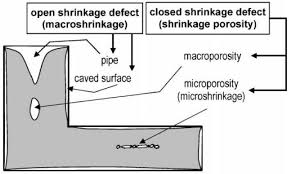 You can prevent shrinkage casting defects by improving the overall casting structure:
You can prevent shrinkage casting defects by improving the overall casting structure:
- Design a running (gate) system with risers that ensure a continuous flow of molten metal
- Increase local heat dissipation by inserting internal chills, cooling ribs or cooling coils
- Reduce casting temperature to limit the total volume deficit
Mold material casting defects and causes
Mold material casting defects are related to the mold material, which is most commonly sand. You and your supplier can typically address these casting defects and causes by modifying the mold.
6. Cuts and washes
Cuts and washes are areas of excess metal. These appear when the molten metal erodes the molding sand.
A cut appears as a low projection along the surface of the drag face, decreasing in height as it extends from one side of the casting to the other.
Causes and prevention of cuts and washes
Cuts and washes can be caused by molten metal flowing at a high velocity, causing too much metal to flow through the gate.
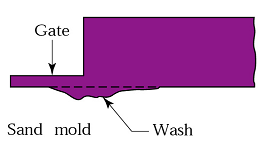 You can prevent cuts and washes easiest by:
You can prevent cuts and washes easiest by:
- Designing the gating system properly
- Improving mold and core strength
- Adding more binders to the facing and core sand
7. Fusion
Fusion occurs when sand grains fuse with molten metal. It appears as a thin crust with a brittle, glassy appearance firmly adhered to the casting.
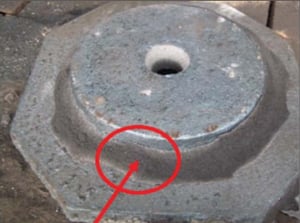 Causes and prevention of fusion
Causes and prevention of fusion
Two main factors can cause fusion:
- Low refractoriness of clay or sand
- Too high pouring temperature of molten metal
Refractoriness is the ability of the molding material to resist the temperature of the liquid so it doesn’t fuse with the metal. Silica sand has the highest refractoriness.
Improving the refractoriness of the molding material and/or reducing the pouring temperature of the molten metal will help prevent fusion.
8. Run out
Run out is when liquid metal leaks out of the mold, leading to an incomplete or missing casting.
A faulty mold or flask is responsible for run out.
Prevention of run out and incomplete castings
To prevent this casting defect, design the casting mold with precision. Inspect and replace any defective molds before casting.
High temperatures can lead to excess wear and tear of the mold. Use quality raw materials for your mold that can resist high temperatures.
9. Swells
Swells are an enlargement of the casting. Swells typically take on the shape of a slight, smooth bulge on the vertical face of castings.
Causes and prevention of swells
Swell is usually caused by improper or soft ramming of the mold or a low strength mold.
Molds should be built to withstand liquid metal pressure. Otherwise, the mold wall may give way or move back, causing swelling.
Using a strong, properly rammed mold prevents swells.
10. Drops
Drops occur when pieces of sand fall into metal casting when it’s still liquid. Drops appear as an irregularly shaped projection on the cope (top) surface of a casting.
Causes and prevention of drops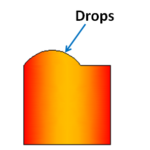
Four potential causes for drops and their preventions include:
- Low sand strength: Use sand of a higher strength if this your culprit
- Soft ramming: Provide harder ramming
- Insufficient fluxing of molten metal: Properly fluxing molten metal removes impurities
- Insufficient reinforcement of sand projections in the cope: Reinforce sand projections using nails or gaggers to fix this issue
11. Rat tails, veins and buckles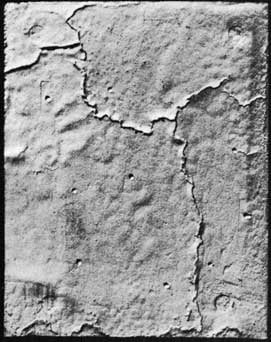
Rat tails, or veins, appear as an irregular line or crack on the casting, when the surface of the molding sand buckles up. Rat tails usually occur on the surface of the mold bottom, an area covered with molten material.
Buckles are a more severe form of rat tails.
Causes and prevention of rat tails and buckles
Rat tails and buckles occur when excessive heat of the metal causes the sand to expand. This may be caused by:
- Poor expansion properties of the sand: Add combustible additives to sand.
- A hot pouring temperature: Reduce pouring temperature of metal.
- Poor mold design: Large and flat sections are more prone to rat tails. The mold also should not be too hard, as it must allow for proper expansion.
12. Metal penetration
Metal penetration occurs when liquid metal penetrates gaps in the molding sand. The penetration is visible to the naked eye as a rough and uneven surface finish of the casting.
Causes and prevention of metal penetration
Metal penetration is due to:
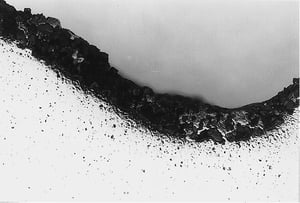 Use of sand with low strength and high permeability
Use of sand with low strength and high permeability - Use of large or coarse sand grain: the coarser the sand grains, the more severe the metal penetration
- Lack of mold wash
- Soft ramming of sand
Prevent metal penetration by fixing these areas. Use high strength, small grain size, low permeability and hard ramming of sand. Ensure a protective barrier against metal penetration by coating the surface of molds with a mold wash.
You can typically remove metal penetration by grinding down the rough surface of the casting.
Metallurgical casting defects and causes
There are two types of metallurgical defects to watch out for.
13. Hot tear/crack
Cracks appear in the form of irregular crevices in a branched pattern.
Some cracks are obvious and easily seen, while others can require magnification.
Cracks occur as the casting cools, towards the end of solidification.
Causes and prevention of hot tears and cracks
If the solidifying metal does not have sufficient strength to resist tensile forces during solidification, hot tears will appear.
Hot tears are mostly caused by poor mold design. Modifying the mold to improve collapsibility can easily resolve these issues.
14. Hot/hard spots
Hot spots are spots that are harder than the surrounding area. This is because they cooled more quickly than the surrounding material.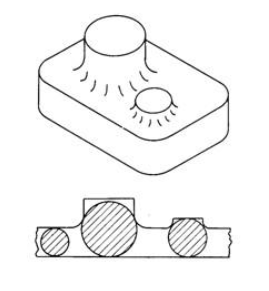
Hard spots can interfere with machining and increase tool wear.
Causes and prevention of hot spots
Hot spots are a direct result of improper cooling practices. There are two potential solutions if hot spots are your problem:
- Start by correcting cooling practice
15. Burn On
A burn on is a type of casting defect that occurs due to localized overheating and subsequent melting or burning of the sand mold or core. It is typically characterized by a discolored or blackened area on the surface of the casting.
When molten metal is poured into a mold, it releases a significant amount of heat. If the mold material, such as sand, cannot withstand this heat or if there are design flaws in the mold, it can lead to overheating and burning of the mold material. Some of the common causes of burns in casting include:- Inadequate mold material
- Improper gating and risering
- Metal temperature
- Metal/mold interaction
Burn defects not only affect the aesthetic appearance of the casting but can also weaken its structural integrity. Therefore, it is important to minimize burn defects through proper design, material selection, and process control in the casting operation.
Pouring casting defects and causes
Pouring metal defects arise during the process of pouring metal into the mold. If you have a pouring metal defect, it will fall into one of these categories:
16. Cold shut/lap
Cold shut is a type of surface defect. You’ll see a line or crack with a round edge on the casting surface.
This defect is visible to the naked eye and often results in rejecting the cast, as it creates a weak spot.
Causes and prevention of cold shut
When molten metal enters the mold from two gates, the streams will meet at a junction. 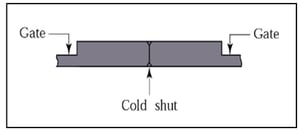 Low temperatures can prevent fusion at the junction, causing the streams to solidify before fusion, creating a cold shut.
Low temperatures can prevent fusion at the junction, causing the streams to solidify before fusion, creating a cold shut.
Cold shut is usually a result of a lack of fluidity of the molten metal, or a poor design of the gating system.
The best way to prevent cold shuts is to increase fluidity of the molten metal. This can be done in a few ways:
- Optimize gating system to minimize narrow cross-paths and ensure short flow paths
- Increase the pouring temperature to prevent premature solidification
- Improve gas permeability of the mold (through coarser grain size, etc.)
17. Misruns are closely related to cold shuts
Misruns occur when the liquid metal is too cold to flow to the extremities of the mold cavity before freezing and solidifying.
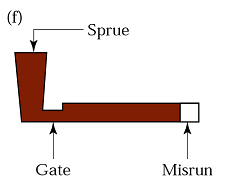 The liquid metal does not completely fill the mold cavity. The misrun is the unfilled portion or space in the mold.
The liquid metal does not completely fill the mold cavity. The misrun is the unfilled portion or space in the mold.
Causes and prevention of misruns
The reasons for premature solidification are similar to those for cold shut. If you have a misrun, check:
- Mold design
- Gating system design and
- Molten metal fluidity
18. Cold shots
Splattering during pouring of a liquid can cause solid globules to form.
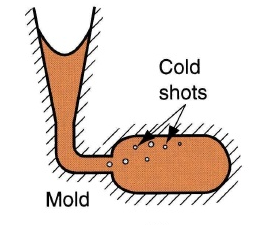 As these globules freeze, they become entrapped in the casting.
As these globules freeze, they become entrapped in the casting.
Cold shots are typically ball, drop or pearl shaped and loosely attached to the metal.
Causes and prevention of cold shots
To prevent splattering and cold shots, consider
- Modifying pouring procedures to minimize turbulence
- Adjusting gating system designs to reduce gate speed
19. Slag inclusion (scab)
These irregular metallic crusts are found on the casting surface. Scabs are typically only a few millimeters thick but can be seen by the naked eye. They usually have sharp edges, irregular shapes and are firmly bonded to the casting.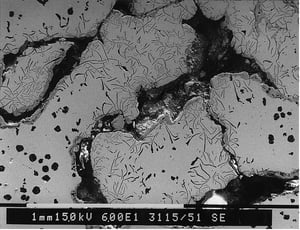
Scabs are closely related to rat tails and they usually appear together. Removal of scabs will typically reveal a rat tail underneath.
Causes and prevention of slag inclusion
Slag inclusion is caused when molten metal containing slag particles is poured into the mold cavities and solidifies.
Preventing slag inclusion is a simple fix. Remove slag particles from the molten metal before pouring it into the mold cavity.
You can remove slag by:
- Melting the metal with a flux, in a vacuum or in an inert atmosphere
- Adding ingredients to the mixture to cause slag to float to the top where you can easily see and remove it before pouring. Or use a special ladle that pours metal from the bottom.
- Adding a ceramic filter into the gating system
Casting shape defects and causes
These types of casting defects are related to the overall shape of the final casting.
20. Shift/mismatch
Mold shift is due to misalignment of upper (cope) and lower (drag) part of the mold. Mold shift is usually reflected as a horizontal displacement.
Core shift is similar to mold shift, but it’s the core that is misaligned, not the mold. Core shift is usually reflected as a vertical displacement.
Causes and prevention of shift
Some causes of shift can include:
- Loose box pins
- Inaccurate pattern dowel pins or
- Carelessness in placing the cope on the drag, causing misalignment
If you’re experiencing shift, try checking the match plate pattern mounting and alignment. Make sure to use proper molding box and closing pins.
21. Flash, fin and burrs
Flash is one of the most frequently occurring casting defects and also a common injection molding defect.
Flash, also known as casting fin or burrs, is any unwanted and excess material attached to a cast. It’s typically a thin sheet of metal that forms at the parting faces. Flash is a waste material that turns into dross after being re-melted.
Causes and prevention of flash, fin and burrs
Flash on the casting surface is due to a crack or gap on the core surface. Insufficient weight on the mold or improper clamping of the flask can lead to a gap.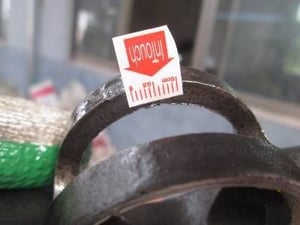
Remedy this issue by reassembling the mold and cores. There should be enough weight on the top part of the mold so that the two parts fit together tightly.
Flash can vary from minor to very serious. If it’s not too serious, manufacturers can remove flash by breaking it off with a hammer or pliers and filing it down to the parting line. However, this can be a costly process.
22. Warping
Warping is an unwanted casting deformity that can occur over time, which results in a change in the dimensions of the final product.It can happen during or after solidification.
Causes and prevention of warping
Warping is typically a result of different rates of solidifications of different sections, which causes stress in adjoining walls. Large and flat sections are more prone to warping.
Normalizing heat treatment can remove residual stress in iron casting. A straightening between quench and aging processes might also be required for aluminum casting.
Limit Casting Defects Before They Leave The Factory
Knowledge of casting defects and causes is an essential first step to managing casting quality. However, brands and retailers will also want to establish an effective quality control process to minimize defects.
This means setting clear defect tolerances and quality expectations with your suppliers before production to help them understand your quality standards. You can also utilize quality control inspections to limit casting defects in your products before they leave the factory.
AQF Can Help
AQF is a leading Quality Control service provider, serving global brands, importers, and retailers of Consumer Products since 2007. We provide a range of quality control inspections to help brands and retailers secure their supply chains. This includes supplier audits, pre-production inspections (PPI), during production inspections (DUPRO), and more.
Contact us today or sign up for AQF online to book your next service. 
Editor’s Note: This article was originally published in SEPTEMBER 2018 by SUNNY WONG. It has since been updated to reflect current best practices, services, and capabilities.



